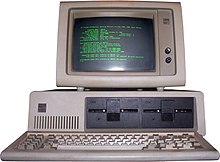5:02 PM Gurus Monitor Info |
MONITOR INFORMATION The size of an approximately rectangular display is usually given as the distance between two opposite screen corners, that is, the diagonal of the rectangle. One problem with this method is that it does not take into account the display aspect ratio, so that for example a 16:9 21 in (53 cm) widescreen display is far less high, and has less area, than a 21 in (53 cm) 4:3 screen. The 4:3 screen has dimensions of 16.8 × 12.6 in (43 × 32 cm) and area 211 sq in , while the widescreen is 18.3 × 10.3 in (46 × 26 cm), 188 sq in (1,210 cm2). For many purposes the height of the display is the main parameter; a 16:9 display needs a diagonal 22% larger than a 4:3 display for the same height. This method of measurement is inherited from the method used for the first generation of CRT television, when picture tubes with circular faces were in common use. Being circular, only their diameter was needed to describe their size. Since these circular tubes were used to display rectangular images, the diagonal measurement of the rectangle was equivalent to the diameter of the tube's face. This method continued even when cathode ray tubes were manufactured as rounded rectangles; it had the advantage of being a single number specifying the size, and was not confusing when the aspect ratio was universally 4:3. A problematic practice was the use of the size of a monitor's imaging element, rather than the size of its viewable image, when describing its size in publicity and advertising materials. On CRT displays a substantial portion of the CRT's screen is concealed behind the case's bezel or shroud in order to hide areas outside the monitor's "safe area" due to overscan. These practices were seen as deceptive, and widespread consumer objection and lawsuits eventually forced most manufacturers to instead measure viewable size Performance measurementsThe performance of a monitor is measured by the following parameters:
ComparisonCRTPros:
Cons:
LCDPros:
Cons:
PlasmaPros:
Cons:
ProblemsPhosphor burn-inPhosphor burn-in is localized aging of the phosphor layer of a CRT screen where it has displayed a static image for long periods of time. This results in a faint permanent image on the screen, even when turned off. In severe cases, it can even be possible to read some of the text, though this only occurs where the displayed text remained the same for years. Burn-in is most commonly seen in the following applications:
Screensavers were developed as a means to avoid burn-in, which was a widespread problem on IBM Personal Computer monochrome monitors in the 1980s. Monochrome displays are generally more vulnerable to burn-in because the phosphor is directly exposed to the electron beam while in color displays, the shadow mask provides some protection. Although still found on newer computers, screen savers are not necessary on LCD monitors. Phosphor burn-in can be "fixed" by running a CRT with the brightness at 100% for several hours, but this merely hides the damage by burning all the phosphor evenly. CRT rebuilders can repair monochrome displays by cutting the front of the picture tube off, scraping out the damaged phosphor, replacing it, and resealing the tube. Color displays can theoretically be repaired, but it is a difficult, expensive process and is normally only done on professional broadcasting monitors (which can cost up to $10,000). Plasma burn-inBurn-in re-emerged as an issue with early plasma displays, which are more vulnerable to this than CRTs. Screen savers with moving images may be used with these to minimize localized burn. Periodic change of the color scheme in use also helps. GlareGlare is a problem caused by the relationship between lighting and screen or by using monitors in bright sunlight. Matte finish LCDs and flat screen CRTs are less prone to reflected glare than conventional curved CRTs or glossy LCDs, and aperture grille CRTs, which are curved on one axis only and are less prone to it than other CRTs curved on both axes. If the problem persists despite moving the monitor or adjusting lighting, a filter using a mesh of very fine black wires may be placed on the screen to reduce glare and improve contrast. These filters were popular in the late 1980s. They do also reduce light output. A filter above will only work against reflective glare; direct glare (such as sunlight) will completely wash out most monitors' internal lighting, and can only be dealt with by use of a hood or transreflective LCD. Color misregistrationWith exceptions of correctly aligned video projectors and stacked LEDs, most display technologies, especially LCD, have an inherent misregistration of the color channels, that is, the centers of the red, green, and blue dots do not line up perfectly. Sub-pixel rendering depends on this misalignment; technologies making use of this include the Apple II from 1976, and more recently Microsoft and XFree86 Incomplete spectrumRGB displays produce most of the visible color spectrum, but not all. This can be a problem where good color matching to non-RGB images is needed. This issue is common to all monitor technologies that use the RGB model. Recently, Sharp introduced a four-color TV (red, green, blue, and yellow) to improve on this. Display interfacesComputer terminalsTTL monitorsVirtual displaysMuch software and video hardware supports the ability to create additional, virtual pieces of desktop, commonly known as workspaces. Spaces is Apple's implementation of virtual displays. |
|
|
| Total comments: 0 | |


